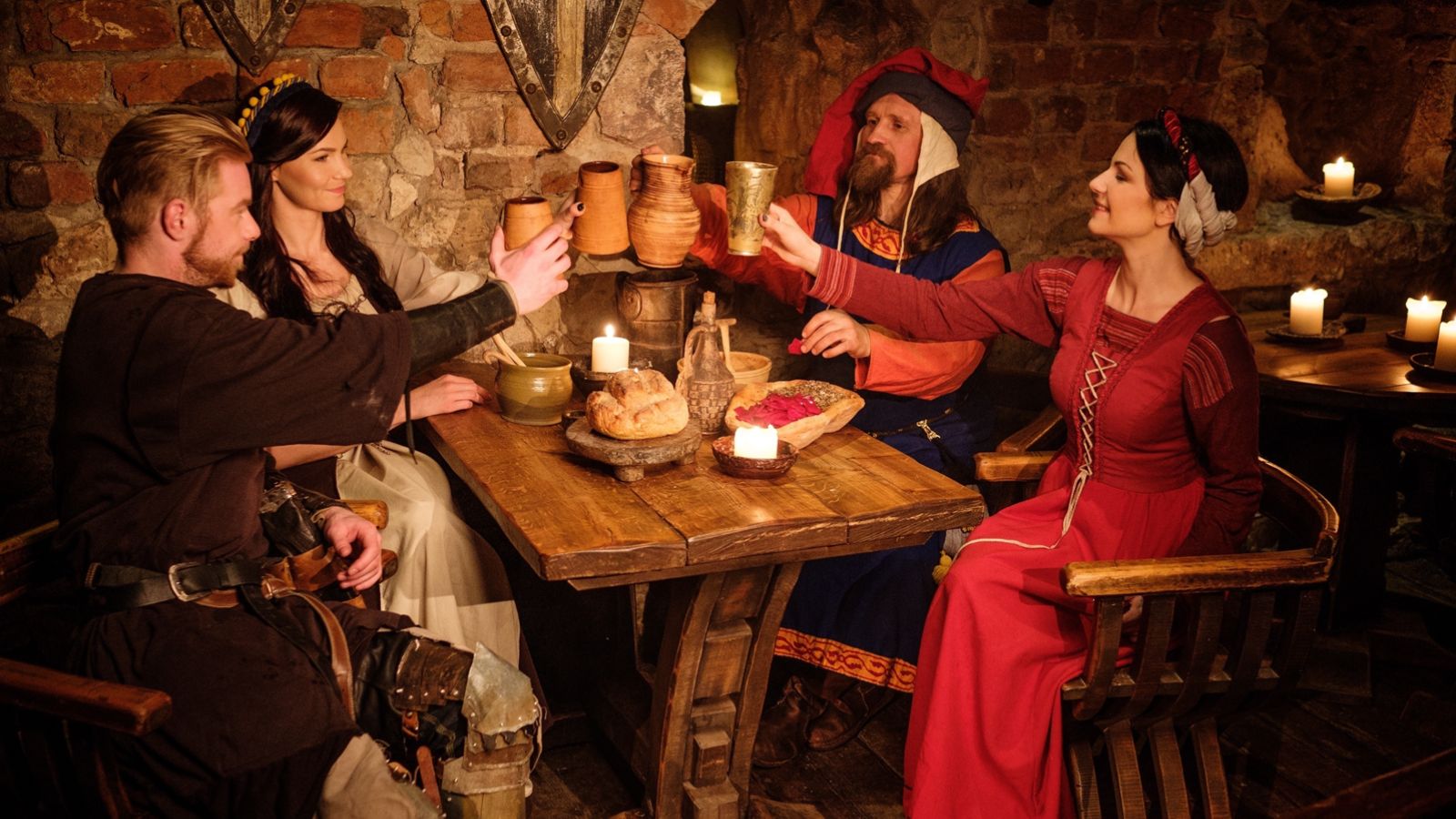We all know that many things in the past were much harder to deal with than they are today. But have you ever wondered exactly what daily life was like centuries ago? This list reveals 17 chilling truths about what it was like in medieval times.
The Brutality of Medieval Justice

As flawed as our justice system may be today, I’m sure we’re all glad that things aren’t the same as they were years ago. In medieval times, punishments were often severe, public, and specifically designed to be as humiliating as possible. Torture was also much more prevalent as a form of punishment and confession extraction.
The Harshness of Serfdom

World History Encyclopedia defines serfs as “unfree laborers who worked the land of a landowner (or tenant) in return for physical and legal protection and the right to work a separate piece of land for their own basic needs.” As you can imagine, these individuals typically worked in basic conditions and had very few rights.
The Prevalence of Disease and Plague

The infamous Black Death took the lives of approximately one-third of Europe’s entire population during the 14th century, making it one of the most fatal pandemics in history. Unfortunately, with poor sanitation standards and a lack of transmission understanding, these kinds of horrific diseases were considered commonplace back in the day.
The Crusades’ Impact on Society

While the Crusaders may have believed they were fighting for a righteous sense of spiritual redemption, their actions led to a devastating loss of life and extreme suffering, particularly among Jewish communities. In fact, Dr. Andrew Holt estimates that around one million people died as a result of the Crusades.
The Feudal System’s Rigidity

As much as we may despise our current system for being overly hierarchical and capitalistic, things could certainly be worse. In medieval times, society was structured according to a strict hierarchy, which left the rich with a huge excess of power and wealth and the poor living lives of destitution, starvation, and dependence on those above them.
The Importance of Religion

No matter how religious you are, you’re likely to agree that the religious strictness observed in medieval times is best left in the past. The Church held a huge amount of power and those who refused to conform to leaders’ religious expectations were sometimes punished by torture or even death.
The Challenge of Daily Life

If you could see the living conditions of an average medieval citizen, you’d realize just how much of modern life we take for granted. With poor hygiene, limited food options, and inefficient housing conditions, diseases ran rampant and winters saw a rise in deaths from cold and starvation.
The Role of Women

Feminism continues to play an important role in many parts of the world. However, those who lived in medieval times had never even heard of this concept. As such, women were faced with very limited educational and occupational options and were often persecuted for being “witches.”
The Reality of Warfare

As you may know from history class, warfare posed a very real and constant threat in medieval times. Kings, queens, and other prominent figures were always leveraging their armies to gain or maintain their position of power. Sadly, many innocent citizens had to pay the price for their desires.
The Struggle for Power

Speaking of power struggles, this was a common theme throughout the medieval period. People in positions of power would frequently subject citizens to severe living conditions, war, famines, and other difficult circumstances as a result of their selfish actions.
The Severity of Child Mortality

Sadly, because doctors and healers weren’t as advanced as they are today, the child mortality rate was very high in medieval times. According to The Economist, in the Middle Ages, 200–300 out of 1,000 children would die in their first year of life. As you can imagine, this was also extremely emotionally difficult for the children’s family members.
The Dangers of Travel

While today we can get on a bus, train, or even plane without thinking twice, danger was much more difficult and perilous in medieval times. Many roads were poorly managed and had to be traversed on foot or horseback, leading to the risk of death from wild animals, bandits, and treacherous conditions.
Limited Medical Knowledge

Even with today’s advanced medical understanding, there are still many diseases and conditions we don’t know how to treat effectively. So we can only imagine what it was like centuries ago. Treatments were often based on superstitions and educated guesses rather than rigorous research, meaning doctors often did more harm than good.
The Impact of Agriculture

Because medieval society was largely agrarian, most people lived in rural areas and spent their days working the land. Unfortunately, even with all the effort poured into growing food, limited understanding and technology often led to crop failure and famine.
Education and Literacy

These days, it’s rare to find Americans who can’t read at all. But back in medieval times, this was far from the case. The Education Resources Information Centre states that during the Middle Ages, Western Europe experienced literacy rates as low as 20%.
Clothing and Fashion

Today, almost everyone in the West can access a wide array of fashion options. This was a different story in medieval times, as clothing was used to indicate social status and was often restricted among the lower classes. As such, many poor people were forced to wear clothes that did not meet their needs for warmth, comfort, or personal taste.
The Existence of Slavery and Serfdom

While serfs may not fit into our modern-day definition of slaves, they were bound to the land they worked on and the will of their landowners. Because of this, they had very few rights, were forced to work the lord’s land, and could even be bought and sold in some instances.
Read More: 21 Things That Will Be Lost Forever When The Boomer Generation is Gone

Baby boomers grew up in a vastly different culture, so they have what younger generations consider strange habits. An internet survey recently asked, “What will die with boomers?” Here are the top 22 answers.
21 Things That Will Be Lost Forever When The Boomer Generation is Gone
18 Common Phrases That Signals Support for Trump

Understanding the unique language of politics, particularly among Trump supporters, can provide valuable insights into the nation’s current state. Here’s a deeper look into 17 phrases you’ll likely only hear from this demographic.
18 Common Phrases That Signals Support for Trump
17 Religious Facts People Get Wrong All the Time

Religious beliefs and practices are often misunderstood, leading to common misconceptions. Some are just too general, others are downright out there. So, we’ll be correcting 17 widely circulated ‘facts’ about world religions.
17 Religious Facts People Get Wrong All the Time
Why People Aren’t Religious Anymore: 15 Simple Reasons

As society evolves, so does our approach to spirituality. This article looks at the subtle yet profound shift from traditional religious adherence to a more personal, evidence-based belief system.
Why People Aren’t Religious Anymore: 15 Simple Reasons
17 American Attractions That Not Even Americans Want to Visit

The United States of America—land of the free, home of the brave, and the location of some of the most ‘unique’ tourist attractions you’ll ever lay eyes on.
Get ready to chuckle, scratch your head, and maybe even facepalm as we look at 17 American attractions that not even Americans think are worth visiting.
17 American Attractions That Not Even Americans Want to Visit

